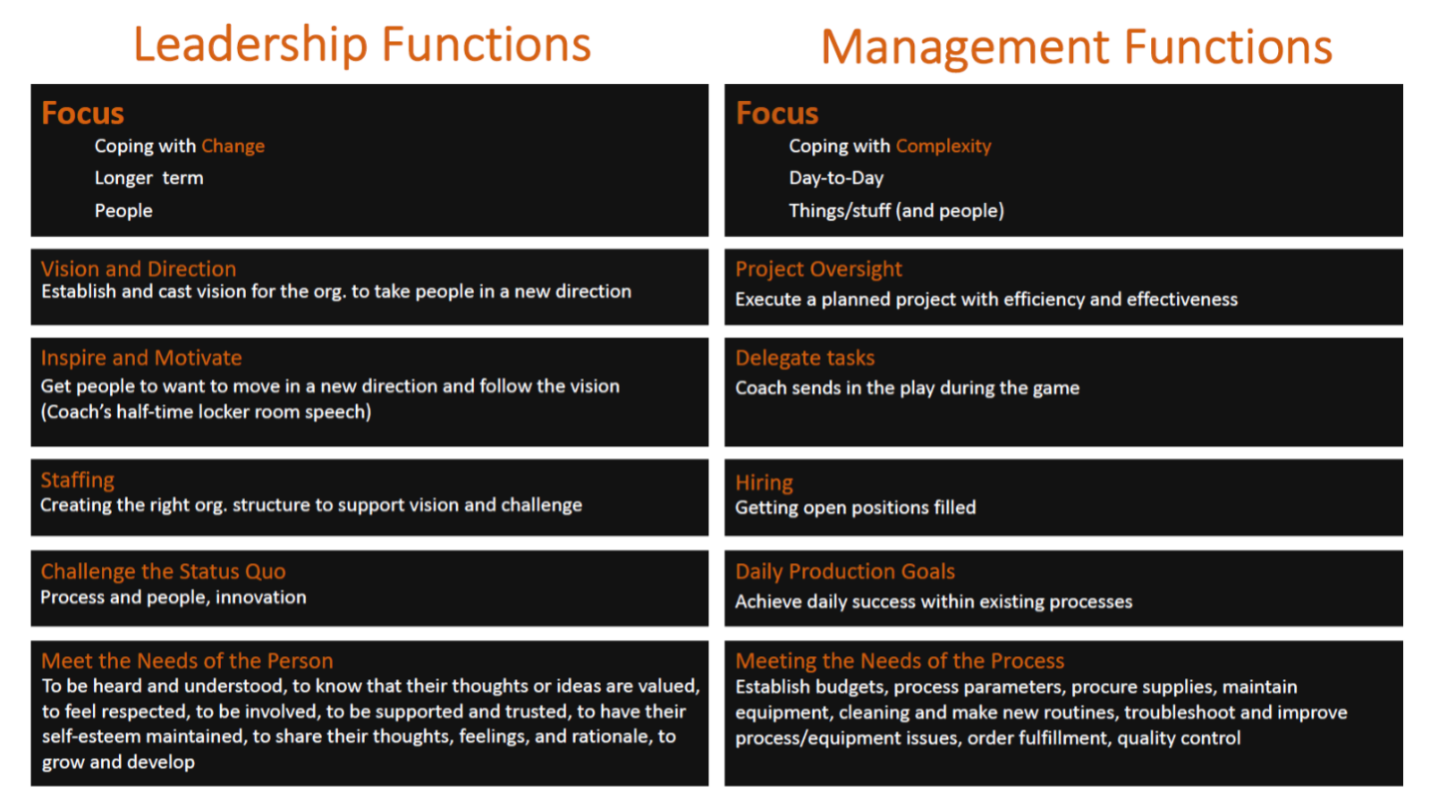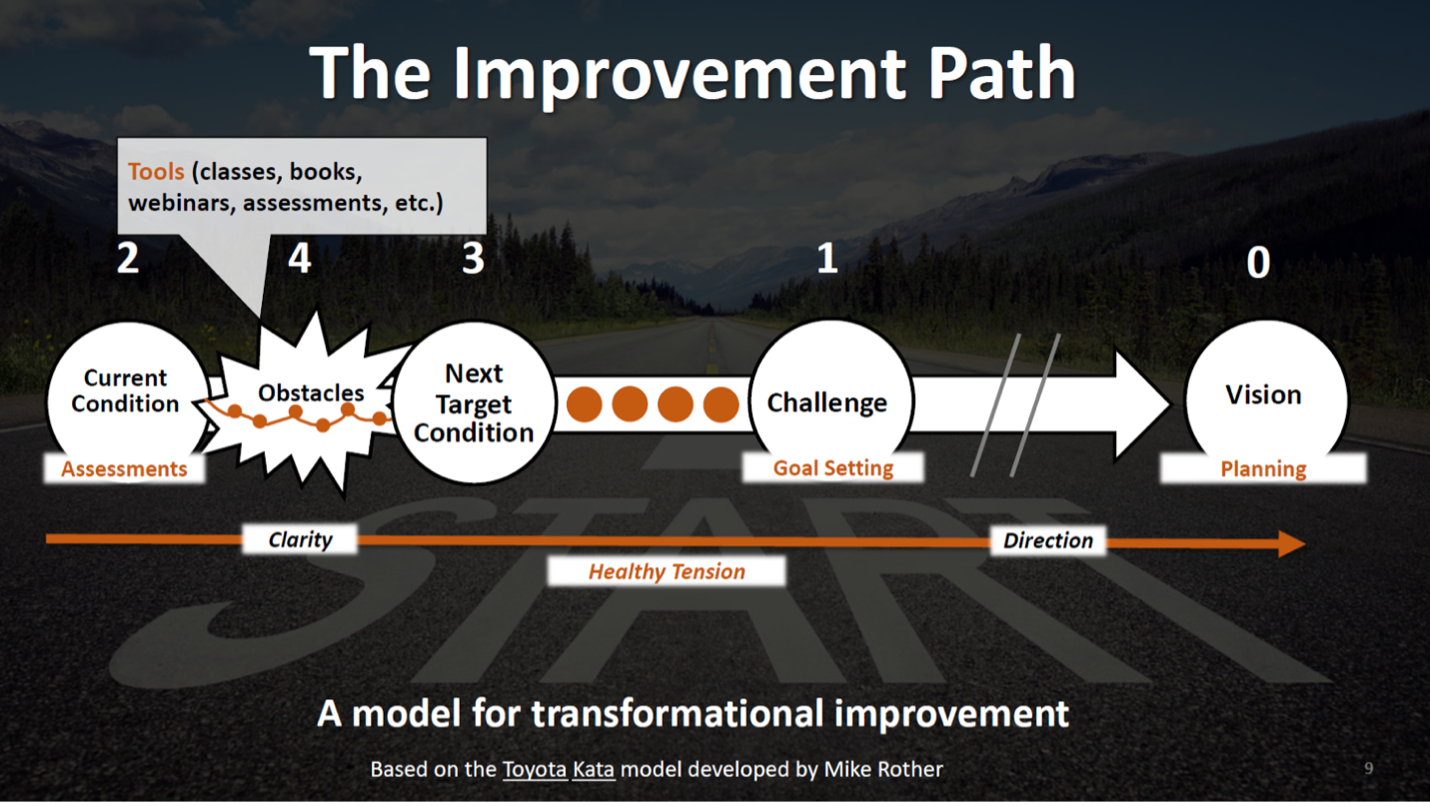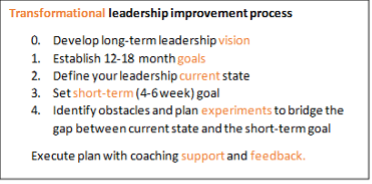Manufacturing Innovation Blog
Powered by the Manufacturing Extension Partnership

Why do so few leadership improvement efforts produce the results that leaders and business sponsors want? What is in the way? Through decades of experience helping manufacturers improve their companies and leadership, Keith Gammill and his colleagues at Arkansas Manufacturing Solutions, the Arkansas MEP Center and part of the MEP National Network™, identified five common obstacles to leadership improvement. They’ve also developed a process to help any organization improve its leaders — and not just a little improvement, but the “who are you and what have you done with my old leader?” type of improvement. In a recent Quality Digest webinar, Keith detailed how it’s done.
Leadership or Management
We tend to use the terms “leadership” and “management” interchangeably. What’s the difference and which is more important? Instead of thinking of them as specific people, what about thinking of leadership and management as functions?
Leadership functions are about coping with change — they’re longer term, they’re about going somewhere. On the other hand, management functions focus on coping with complexity — day-to-day stuff. You need both functions.

Management functions are important to your business, and it’s natural to spend a lot of time on them. But when we’re talking about leadership development, where should you focus?
Leadership requires a clear vision. Many small manufacturers don’t put the time into developing a clearly defined vision for their organization. It seems fluffy and time-consuming — the kind of thing that larger companies do.
That’s a mistake because a clear vision is the compass heading that will point the way for you and your organization to move forward. Without a vision, you might not recognize when something that comes up is an opportunity or just a distraction. Without a vision, you won’t realize when you’re drifting.
Five Common Obstacles to Transformational Leadership Improvement
No matter how engaging they are, many leadership trainers face similar frustrations — it’s hard to get people to see the big picture, really buy into training, follow through with skills practice between sessions, and finally apply what they learn. Why? There is a combination of factors:
- The absence of “learning tension” and support. People usually attend training because they’re required to, and they are not motivated beyond showing up. While “tension” is often associated with stress or uncertainty (and learning something new can be stressful), there’s also tension when something is exciting and interesting. “Learning tension” happens when a manager sits down with an employee and explains a clear purpose for the training, linking it to the organization’s needs. The conversation might go like this: “We’re getting ready to do this task and here’s how it connects with our organization’s strategies this year. This is why it’s important for you. This is how I expect you to show up for the training: You need to be on time, fully engaged in the sessions, and do the in-between-session work. And by the way, I understand it’s taking away from your day job. What kind of support do you need from me?” That conversation is a lot different than being told, “Hey, there’s someone giving a training on Wednesday, you should show up for that.”
- No frame of reference for what to improve. Leadership is this big fuzzy thing — so many books and articles have been written on it. Search “leadership” on the internet and you’ll get a million hits. But when it comes to improving your own leadership skills, what do you actually work on? Leaders often don’t have the “handles” that they can pick up and move forward with in a concrete, specific way.
- No context for why improvement is needed. Two kinds of leaders often show up at training. One type thinks they’re already pretty good. They must be doing something right, so why change? The more common type shows up to leadership training so busy with their day job that they have no time or energy to focus on the training. Without making the value proposition — a clear business case — these leaders have no context for wanting to improve.
- The fear and insecurity of using new tools and approaches. Leaders get used to being seen as the expert and don’t like to think of themselves as afraid or insecure. They know more about the product and the business than anyone. So, opening themselves to new approaches and tools exposes a vulnerability they’re not used to. They won’t be the expert for the team — there’s often insecurity or reticence about this.
- Trying to focus on too many things at once. In the context of leadership development, this is the biggest obstacle — trying to focus on too many things at one time. In the narrow slice of available time, we need to be strategic and focused. That whirlwind day job isn’t going away. The business marches on. But without a clear focus, attention and effort are diluted.
Applying the Toyota Kata Improvement Methodology to Leadership Improvement
When we start a new project, it’s natural to fall back on old habits — how it’s always been done. There’s no point to reinventing the wheel. In the case of leadership, though, habits are a barrier to change. Effective leadership training brings new awareness to leaders to be more strategic — to set goals, recognize choice points, and be more intentional moving forward.
In his book Toyota Kata: Managing People for Improvement, Adaptiveness and Superior Results, Mike Rother provides the “improvement path model.” This model for continuous improvement can be applied to leadership improvement — the tools to move forward intentionally.

Step 0 – Vision: Everything starts with defining a clear vision. That’s step zero — envisioning what could be and beginning the planning process to get there. Transformational leadership training begins with identifying core values and developing a vision. This helps overcome the obstacle of not knowing what to improve. All improvement activities should focus on moving you toward your vision.
Step 1 – Define the challenge/set goals: You need to think through the steps that will get you to your vision. Where can you be in 12 to 18 months? Defining the challenge means setting long-term goals aligned with your vision. Defining the challenge and setting goals provides context during the transformational leadership training process. This builds the value proposition that helps the leader find the time and motivation needed to move forward. The challenge should be quantifiable and describe how you want to be operating at the end of this time frame.
Step 2 – Assessing the current condition: Next you will need to define and quantify where you’re currently at relative to your long-term goals. This typically requires a tool like a 360-Degree Assessment, which gets feedback from people who work around you, including your manager, peers, and direct reports. This helps you understand your strengths and weaknesses. Now you have healthy tension — something compelling you forward in a specific direction. In transformational leadership training, expectations and support needs are discussed. This helps overcome the obstacles relating to an absence of tension and support. It also helps the leader identify what to improve.
Step 3 – Target condition: Target conditions should be quantifiable and describe how you want to be operating at the end of this time frame. You need to set short-term goals along the way toward achieving your long-term goals and realizing your vision. These target conditions are about four to six weeks out. In transformational leadership training, identifying short-term goals helps the leader know why improvement is needed and keeps them from focusing on too many things at once.
Step 4 – Working through obstacles: Between the current state and target conditions is a cloud of obstacles that you must navigate. Obstacles will naturally pop up. This is where improvement really begins — picking an obstacle and working on it. There will be many obstacles, but it’s important to focus work only on obstacles that are standing directly between you and achieving your short-term goals. In transformational leadership training, experiments to solve problems are used. The goal of an experiment is to learn. It’s not about success or failure — maybe you learn what to cross off the list. Experiments help work through obstacles on the improvement path. This mindset removes the obstacle of insecurity about trying new things.
Rinse, repeat: When you reach your short-term goal, that becomes your new current condition. What do you do next? Set a new short-term goal. And when you get there, set another new short-term goal. Little by little, you’ll make your way toward the long-term challenge goal that you set. And when you get there? Celebrate! Celebrate all along the way. This iterative process takes you toward your vision.

A Coach Can Improve Your Leadership
The problem is that many folks start on a path toward leadership improvement, but without a plan they’re basically throwing spaghetti at the wall and hoping something sticks. They may have some tools, books, or even a class, but they’re missing the big picture. That’s where a coach helps — getting you from a little progress to transformational leadership improvement. The good news is the MEP National Network has Centers in every state and Puerto Rico to help you transform your leadership. They offer much more than that, including helpful resources such as “The Manufacturers’ Guide to Finding and Retaining Talent.” Contact your local MEP Center to learn how it can help transform your manufacturing business and make you a better leader.


